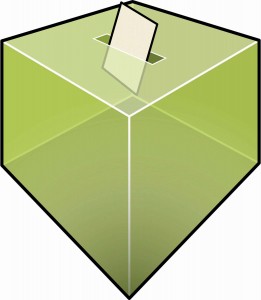WE BREAK COVER STORY DOWN THE VAST ELECTION PROCESS TO TELL YOU HOW YOU CAN MAKE SURE YOU ARE WELL REPRESENTED IN PARLIAMENT
PARLIAMENT OF INDIA
The Indian Parliament consists of two houses: the lower house is called the Lok Sabha (House of the People) and the upper house is called the Rajya Sabha (Council of States). The Parliament consists of 790 members of parliament who are elected directly and indirectly by the citizens of India to be represented as part of the Indian government.
RAJYA SABHA
The Rajya Sabha consists of 250 members of which 238 are elected by members of the State Legislative Assemblies and 12 are directly nominated by the President of India for their contribution to art, literature, science and social service. The members of the Rajya Sabha serve in office for 6 years but one-third retires every 2 years. Citizens of India cannot directly vote the members of the Rajya Sabha into office. They vote the members of the State Legislative Assembly into power who represent their respective state or union territory to vote the members of the Rajya Sabha to power.
STATE ELECTIONS
State elections are held every 5 years. The Member of the Legislative Assemblies (MLAs) for the individual states and union territories are directly elected in the state elections by the citizens of India. The State Assembly is also known as the Vidhan Sabha. Once the members are elected, the political party with the majority of members will form the state government and appoint a Chief Minister from within its members.
LOK SABHA
The Lok Sabha consists of not more than 552 members of which not more than 530 represent the States, not more than 20 represent the Union Territories and not more than 2 can be nominated from the Anglo-Indian community by the President of India if he/she feels the community isn’t adequately represented. The citizens of India directly vote for the members of the Lok Sabha. The members are elected into office through the general elections which are conducted once every 5 years which is the term of office for a member of the Lok Sabha.
GENERAL ELECTIONS
The country is split up into individual constituencies. The number of constituencies for each state depends on its population and area. Not more than 550 members can be elected to the Lok Sabha through the constituencies. Only one member can represent one constituency.
CENTRAL GOVERNMENT
The members who are elected to power in the general elections form the Lok Sabha. The political party with the majority of members in the Lok Sabha will become the ruling party while the political party with the second highest number of members but not part of the ruling party or coalition will form the opposition party. The members of the ruling party will then form the central government and a candidate will be appointed as the Prime Minister from within their members. A minimum of 50% members of the Lok Sabha should vote in favour of the new government in order for it to be valid.
COALITION GOVERNMENT
If a political party does not have a minimum of 50% members in the Lok Sabha to prove it has majority, it can form an alliance with one or more political parties that have members in the Lok Sabha thereby attaining a majority. A government formed in this manner is called a coalition government. Often political parties have allied parties before the elections which will be part of the coalition after the election process is complete. This allows a party to compete in a constituency where it will definitely win and join with its ally to form a coalition government after elections. For example, Shiv Sena, an ally of the national Bharatiya Janata Party, usually expects its candidates to win in constituencies of Maharashtra following which Shiv Sena and Bharatiya Janata Party join for the coalition central government.
NONE OF THE ABOVE
None of the Above (NOTA) is an option in the ballot which allows the voter to cast a vote which is not in favour of any of the candidates of his/her constituency. It is also called an ‘against all vote’, a ‘scratch vote’ or a ‘negative vote’. If the None of the Above option receives a majority of votes, the ballot is scratched and fresh elections are held with new nominees for the voters to choose from.
WHERE DOES YOUR VOTE GO?
POLITICAL PARTIES USUALLY NOMINATE A CANDIDATE FOR THE POST OF PRIME MINISTER THEREBY GIVING VOTERS A DEFINITE PERSON TO VOTE FOR. HOWEVER, WITH THE SYSTEM OF CONSTITUENCIES IN INDIA, THE VOTER DOES NOT DIRECTLY VOTE FOR THE PRIME MINISTERIAL CANDIDATE. IF YOU WANT A PARTICULAR PRIME MINISTERIAL CANDIDATE TO WIN, YOU WILL HAVE TO VOTE FOR THE REPRESENTATIVE IN YOUR CONSTITUENCY OF THE POLITICAL PARTY THE CANDIDATE BELONGS TO.
Volume 3 Issue 10





























